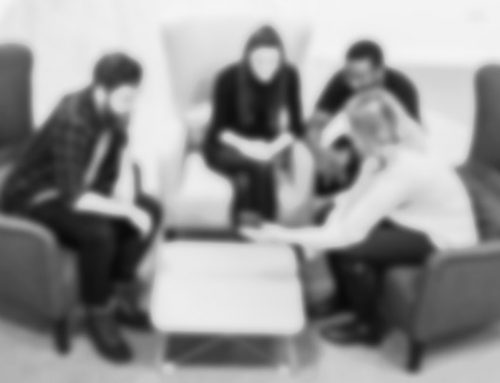Frustration increased as my colleague prodded her greasy index finger on my Macbook Pro’s screen and tried to swipe the web page we were looking at to the right.
“It’s not a touchscreen”, I pointed out.
The look of surprise and bewilderment which crossed her face made a couple of neurons fire in my agitated brain, and something clicked inside me about the struggle to manage clients expectations in a digital age.
What seemed impossible yesterday, is the norm today. My colleague abuses her phone every day to swipe and jab at – all she’d done was assume that everything else worked the same way; and why shouldn’t she?
GQ magazine recently hit the nail on the head with the quote “the only things that consistently move faster than technological advancements are the expectations of them.”
With this in mind, how do you manage clients expectations delivering a project when faced with the devastatingly effective (and “free”*) results of the likes of Google?
Cars Vs Fruit
Back in the day, Saab was pushing the boundaries of car luxury and technology in their vehicle. They were pretty slick and looked the part.
Anyone under 30 is probably reading this on their iPhone thinking “who the hell are Saab?”. Well, Saab were founded in 1945 and released a number of impressive cars until they became complacent with their success in the 90’s and stopped leading the way. They closed in 2012 having not produced anything noteworthy for years.
Simply put you need to “innovate or die.” Saab failed to follow this simple mantra.
Contrast this with Apple, who were conversely back in the 80’s produced pretty dire machines competing with the likes of IBM. So what happened?
Steve Jobs did what Saab failed to continue to do, his strategy for Apple had four pillars:
- Offer a small number of products
- Focus on high-end products and consumers
- Give priority to profits over market share
- Create a halo effect that makes people starve for new Apple products
Ultimately Apple is just selling laptops, phones, mp3 players and watches. But they’ve focused on what they do without becoming complacent.
If you want to survive in a digital age where everything just works (so nothing is impressive to buyers) you need to show real value, something different. Or be the cheapest.
Technology is now something you only notice when it’s not working. We as consumers don’t consider the vast server farms, PhDs, and coding which goes into some of the simplest looking outcomes, and yet expect this at the touch of our fingers for free. Why would client’s not expect the same when they’re parting with their cash?
How to Beat the Curve
One of the frustrations of modern life is not every industry has accepted the digital revolution, let alone embraced it. Music, films and travel have all ridden the wave, but banks, insurance, housing associations and some retailers are still struggling to keep up.
Due to this technological asymmetry, the market is still open, and it’s possible to wow clients and show companies the value of amalgamated technology.
Short of coming up with the next big search algorithm there’s still the opportunity to impress customers using a jigsaw approach. Uber didn’t create mobile technology, but they have exploited it and created a successful business around it rather than being just another taxi firm.
Riding on the shoulders of giants and pulling together a solution from off the shelf solutions is a way to take an old tech business into a new tech age.
Off the shelf solutions are well executed, relatively cheap and allow the potential to land and expand further services and ideas. There are risks, but there’s nothing like competition and peer review to force coders to produce products with a low technical debt.
Mismanaged expectations
The next hurdle to overcome is dealing with mismanagement of expectations. Ensure clients know what they are getting. It’s easier to explain the planned outcome at the start of the project than on delivery.
Even better, get the client to explain what the outcome / KPi’s needs to be regarding success criteria. This will mitigate their disappointment (though it won’t reduce this to zero especially if the client has poor internal communication between stakeholders – this is just a risk everyone in agency life has to roll with).
While we may be in the “Interim of Things” rather than the “Internet of Things” there are still commercial opportunities out there for savvy companies to exploit. The approach and management of the client’s expectations are critical in delivering a project and hitting that elusive “happy” KPI while avoiding “Digital Disappointment.”
*Okay, Google doesn’t charge in monetary terms for it’s forward facing service, it just takes your valuable search data and makes a massive profit selling it on to the highest bidder.








Leave A Comment